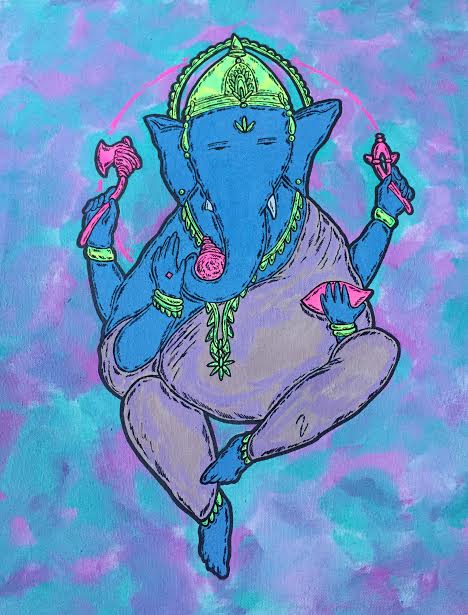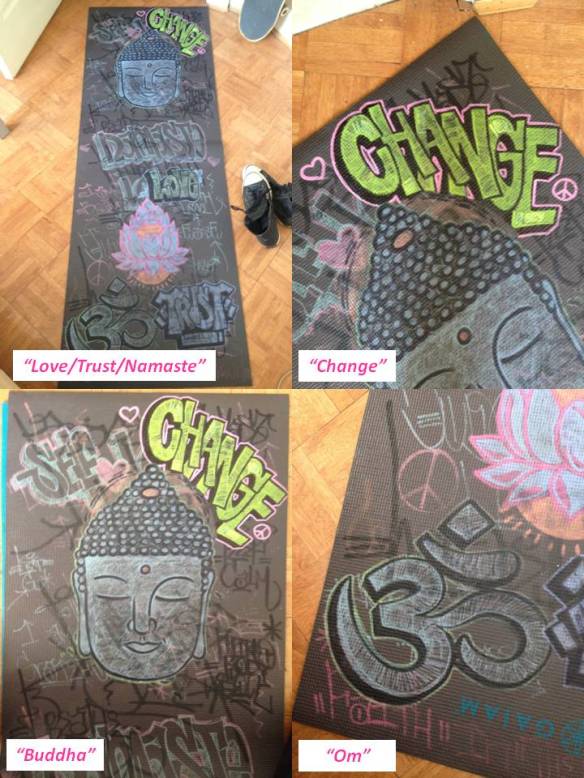Updated interpretation by the very thoughtful and talented Swetha:
At first glance, this Ganesha seems traditional in his form: He has large ears to symbolize the importance of absorbing knowledge, a broken tusk to symbolize the Oneness of all, an abundantly large belly, and feet that are both grounded in the material sphere, and raised towards the spiritual.
This Ganesha has four hands, each embodying divine qualities: His upper hands hold an axe to severe worldly attachments and a goad to guide a wavering mind. His lower hands are, in a sense, paths to harness his energy. One of his hands holds a conch shell, which symbolizes the start of prayer — as the Remover of Obstacles, Ganesha is the first deity one prays to. His raised hand is a comforting sign that provides protection to his devotees.
Despite the presence of these traditional elements, this Ganesha still gives off a deeper, unconventional vibe.
The artist’s familiarity with and gravitation towards Buddhist elements is rather apparent in his strokes and depiction of Ganesha’s crown, both of which lend an air of understatement that one sees more in Buddhist art than its Hindu counterpart.
While Hindu art acknowledges that Ganesha’s eyes are believed to be small, the most common depictions show large, expressive eyes. The artist’s rendition here, while besides the norm, seems to bestow Ganesha with the true sense of concentration that he possesses.
A particularly interesting element is the artist’s decision to make Ganesha hold his modaka with his trunk, as opposed to one of his hands. While this is not wrong by any means, it certainly is a rare depiction. This, combined with the aforementioned elements and overall aura of the piece, leads me to believe that its creation was a highly meditative process for the artist, with a greater focus on Ganesha as a guide away from negative mental habits than a destroyer of worldly obstacles. It appears to me that the artist has enough material abundance in his life, but is struggling spiritually.
The colors used in this painting, while unorthodox, certainly aid the symbolism behind the piece. The use of bright colors such as green and pink remind a devotee of Ganesha’s playful nature, and his position as the son of Lord Shiva and Goddess Parvati.
Yet, despite the presence of this playful nature amidst the calm, muted blue tones, the omniscient power of Ganesha radiates off this piece. Perhaps it’s because of his pensive eyes, or his right-facing trunk, which some believe to represent a more spiritually-charged Ganesha. Whichever the reason, it’s clear that this Ganesha, while skirting the line between the traditional and unorthodox, emanates significant divine energy.



